By Ogova Ondego
Published May 27, 2016
![science teacher, songwriter and gospel musician Geraldine Akinyi Oduor]() We have caught up with science teacher and gospel musician Geraldine Akinyi Oduor, six years after she won a Groove Award for gospel music. We capture her thoughts on music, commerce, technology, and spirituality ahead of the 11th Groove Awards with Safaricom gala ceremony on June 1, 2016.
We have caught up with science teacher and gospel musician Geraldine Akinyi Oduor, six years after she won a Groove Award for gospel music. We capture her thoughts on music, commerce, technology, and spirituality ahead of the 11th Groove Awards with Safaricom gala ceremony on June 1, 2016.
RELATED:Kenya Ushers New Gospel Musician On Stage
ArtMatters.Info last wrote about you in 2010; what have you been up to since then?
I am grateful to ArtMatters.Info for the opportunity to share my views on its platform. This far the Lord has been so faithful and true to His word. I have so far seen His love, grace and mercy in my ministry and do confidently say that I am not the lady I was six years ago. The Lord has kept me in the faith.
How many more albums have you recorded and released since then?
In 2010 I only had two albums consisting of 10 songs each; a total of 20 songs. I have recorded three more albums, bringing the number to five albums and 50 songs; each album consists 10 songs. The challenges I have so far gone through in life and in the Christian ministry have made me stronger and better focused.
What challenges are these you have gone through in life and in ministry, and how have they made you stronger and better focused?
The challenges are many. There’s lots of pressure from both within or without. People’s expectations of one sometimes are also too high. At times you may feel so vulnerable. This makes one to rely more on God’s grace; not personal abilities. The more one goes up, the more one is likely to get so engrossed in ministry that one neglects the basics of salvation like prayer or one’s original local assembly.
The gala ceremony of Groove Awards with Safaricom shall be held on June 1, 2016; what do you see as the place and role of initiatives such as Groove Awards in Kenya?
Groove Awards has helped expose and bring up many new, young, up-and-coming talents on the gospel music scene. It has also offered a platform for national awards in the gospel scene which hadn’t been there before.
RELATED:Alice Kamande’s Gospel Music Album Oozes Youthful Contemporary Tunes and Choreography
You once won a prize in Groove Awards for Gospel music; when was this?
I won a Groove Award for Nyanza Counties in 2010.
![Geraldine A Oduor says 'The Lord has kept me in the faith.']() But you surely are a Nairobi, not Nyanza, artist; how did you come to be considered a Nyanza region musician?
But you surely are a Nairobi, not Nyanza, artist; how did you come to be considered a Nyanza region musician?
The Award was Nyanza-based. I may not know much because the voting was done from all over the country. My music is 80% done in Kiswahili and not in mother tongue. God however used it for good and gave me a good startup in Nyanza where I don’t reside but trace my roots from.
How much prize money did you get?
Around that time there wasn’t any monetary attachment to the awards or any tangible reward save for the glass trophy which I keep as a reminder of the same.
What did that win mean for you?
It was a humbling and exciting experience at the same time since it was my first ever award. I thank God and the people who voted for me. I would however advise this generation and fellow musicians not to dwell so much on awards as that’s not our ultimate goal and prize, much as in whatever we do in life, it’s good to be recognised and appreciated. Let the Awards never bring rifts, enmity and strife among artists. We gospel musicians are all equal and complement one another in ministry. It doesn’t mean that if you are awarded then you are better than the rest. After all, awards come and go, but the gospel of Christ continues.
RELATED:Singer Geraldine Oduor Speaks About Her Work
Are you suggesting that gospel awards cause ‘rifts, enmity and strife’ among gospel musicians? How is that?
Rifts or enmity depend on the spiritual maturity of the artists. That’s why I advocate for gospel musicians to start ministry from the grassroots in their local church. In such church groups, people are trained to mature up in the ministry such that by the time one comes to the national limelight, such squabbles, scandals and rifts would be greatly reduced, if not avoided. It also helps musicians to be directly accountable to spiritual authority or pastor. This helps in instilling in us morals as well as providing checks and balances.
How many more times were you nominated for Groove Awards, and in which categories?
I was nominated for three consecutive years. I however wasn’t too keen on the same any more.
![Gospel artist Geraldine Oduor says, 'I want to teach this generation to submit to the principles of God's word in its simplicity.']() Why weren’t you keen on winning again after your victory in 2010?
Why weren’t you keen on winning again after your victory in 2010?
Just over the years, we learn and outgrow certain things. The Bible says, “Seek ye first the kingdom of God and its righteousness and all these other things shall be added unto you.” It’s a bit risky for the ministry side of gospel music to focus your attention on gospel awards. Much as it isn’t evil either, the ultimate prize-giver is Christ after we have won the race. If the awards come, let them come and find you labouring in the Lord’s vineyard!
You haven’t featured again among nominees over the past two or three years; why is that?
I haven’t featured in the past few years, yes; I thank God for that. There’s a time for everything. The main aim of the award is to expose emerging talent. Right now I mentor hundreds of young people in the industry at so many levels who are very promising and must also get a chance to grow. It would be ridiculous to keep hustling for votes with the same people who look up to you for advice and refer to you as ‘mum’.
Which albums have you recorded and released since then?
By 2009 I had the albums ‘Damu Ya Yesu’ and ‘Mungu Wa Biblia’. Towards the end of 2011 I released an album titled ‘Neno Lako’ in which I featured Dan Shilla and Christina Shusho of Tanzania. Around the same time I also did a 10-track album in Dholuo (Luo language) called ‘Dongo Dongo’. In late 2015 I again started working on my latest album, ‘Alfa na Omega’, off which I have so far done three videos: ‘Hakuna kama Wewe’, ‘Watosha’ and ‘Roho Mtakatifu’. I have featured Mireille Basirwa, a Congolese-born, Belgium-based singer, in the videos.
Have you featured Basirwa in all the three videos?
I have featured the worshiper in the song “Roho Mtakatifu” that talks about the Holy Spirit. I have also featured another Congolese musician, MassMasylia, in another song, “Unaweza”.
With my music mentor, Mary Atieno, I have done two songs. One is a Kiswahili worship song called “Utukuzwe”. She and I co-wrote the song. I was keen to learn from her how she writes songs, her skills having amazed me over the years. Her songs are Bible-based and scripturally-sound.
The other song we did, “Hono”, is in both Dholuo and Kiswahili. It talks about the miraculous God we serve. The song starts in Dholuo in the first two verses but is summed up in Kiswahili towards the end.
I have also done yet another song with Dan Shilla Ngosso, the one with whom I did another song, “Msaada Wangu”, in my earlier album. Like “Msaada Wangu”, I also wrote “Alfa na Omega”, and only featured Dan Shilla Ngosso in the singing.
Has your manner of work changed in any way over the past six years?
I have had more responsibilities but God’s grace so far has been sufficient. The ministry has grown with its demands too. I travel more often for missions and it’s been humbling to witness what the Lord is doing in the lives of people.
What is the status of Gospel music in Kenya now?
Quite a lot has changed. The Lord has raised many more people. The era of doing albums is almost gone as most people now prefer to do single songs and videos. Many more people rely on the internet to download songs as opposed to buying of full music albums as was the case before. Many more people are also struggling to up their game in terms of doing high quality productions.
Say something about this new way of music business: music streaming, ring tones, etc. How many Kenyans are using it? Have you, also, adopted it?
The online music streaming business is yet to pick up and benefit the Kenyan musician but we are hoping to reap from it soon. The music is uploaded online mostly by registered companies. Whoever wants to download does so at a cost then the companies are supposed to pay the musician a certain percentage of the income. It’s however been quite a challenge for the musician to ascertain the exact amount of income one is entitled to as most of these companies don’t avail the statistics/figures of the downloads.
We also have ringtones and ring back tones which is sales through mobile phones. This has also been slowed lately by the squabbles between the Music Copyrights Society of Kenya and the content providers. The artists are yet to benefit fully. We are hoping that all will be well soon.
![Geraldine Oduor, a former secondary school teacher who sings gospel music]() What sort of music videos are artists in Kenya making?
What sort of music videos are artists in Kenya making?
The videos have gone a notch higher in terms of quality to be able to keep up with the growing technology.
The bottom line for me, even as I struggle to keep up with the quality of productions, is to keep true to the message of the gospel I have sang over the years.
Mary Atieno has taught me that songs sang under the inspiration of the Holy Spirit will touch lives for many generations to come. That the MESSAGE in the song is of the essence; it precedes everything else.
Are artists in Kenya as competitive as their counterparts in, say, Nigeria and South Africa?
The Kenyan artists are trying. Gospel music is about the gospel message which must be inspired by the Holy Spirit depending on the needs of people as God deems fit. It would therefore not be fair to start comparing ourselves so much with other. The gospel of Christ remains one. The method of delivering it may differ from nation to nation, all to God’s glory.
But music is surely much more than just the gospel; it is an industry; a big business?
There’s the business side of the music industry and the ministry side of it for those doing gospel music. It’s important to balance between the business and ministry sides.
Gospel musicians can be paid for performances but that shouldn’t be the ultimate aim because gospel is about spreading good news. If it was about money all the way, then some of us wouldn’t have heard of the good news or received salvation. This is because we didn’t have any money at all to have been capable of paying a musician. So many people have testified of giving their lives to the Lord through our songs. The balancing act between message and commerce should be done wisely.
RELATED:Music Awards Fail Kenya’s Burgeoning Gospel Music Sector
![Kenyan gospel musician Geraldine Oduor]() Would you say mass media–radio, television, newspapers, websites, blogs–are interested in, and are supportive of, Gospel music in Kenya?
Would you say mass media–radio, television, newspapers, websites, blogs–are interested in, and are supportive of, Gospel music in Kenya?
Yes and No. For those who remain true to the word and call of Christ, God has a way of advertising whatever little effort they are making. A day’s encounter with God’s favour in terms of marketing and publicity is worth more than millions of shillings invested in media coverage. God inspires the gospel and delivers it across at the most appropriate time.
What challenges do Gospel musicians in Kenya face?
The challenges are so many ranging from lack of funds, piracy to jostling for space in the mainstream media. It’s becoming extremely difficult for young talents to breakthrough due to the high cost of quality production.
RELATED:Angela Chibalonza-Inspired Singer Brings Gospel Festival to Nairobi’s Eastlands
What solutions would you suggest for such challenges?
If it’s in the gospel music ministry God has called you to, He’ll make a way for your work to get to the target audience. Be wary of quick fixes and faster rise to fame. Wait on God to uplift you for when He does, nobody can bring you down. Young people need to be taught that ministry begins in the local church, not the broadcast studio. Sing and be a blessing in the local church choir/worship team. The government should also put measures in place to curb piracy so that musicians can get a good return for their labour.
What are you focusing on now?
More than just singing, I want to live to inspire somebody. I desire to impact the lives of people and make a lasting investment in terms of bringing change through spiritual nourishhment. Fame comes and goes. But people whose lives are changed are for eternity. My ultimate aim is to see the fulfillment of the dream God gave me: ushering people into His presence through worship.
Where are you likely to be in, say, two-to-five years from now?
I see myself establishing a foundation where young people or those struggling with life can get help. Many people, from what I read in my inbox daily, want to come out of the mess that is homosexuality, lesbianism, sexual immorality and the stigma of HIV & Aids. I want to teach this generation to submit to the principles of God’s word in its simplicity.
The post Singer Speaks About Awards, Commerce and God appeared first on ArtMatters.Info.
 Saturday, January 23, 2016. The day may have begun like any other weekend in Kenya. But it gradually grew grimmer among them that monitor website readership performance.
Saturday, January 23, 2016. The day may have begun like any other weekend in Kenya. But it gradually grew grimmer among them that monitor website readership performance. Even without being told, something appeared not to be sitting well with Kenya’s 40-year ‘one-man guitar’ entertainment movement; it had lost a valiant foot soldier. That is how the death of Paul Mwangi whose stage name is Salim Junior, was announced to the world on January 23, 2016.
Even without being told, something appeared not to be sitting well with Kenya’s 40-year ‘one-man guitar’ entertainment movement; it had lost a valiant foot soldier. That is how the death of Paul Mwangi whose stage name is Salim Junior, was announced to the world on January 23, 2016. Mwangi’s ability in remixing or recreating traditional Gikuyu secular songs and Christian choruses and hymns endeared him to many. His remix of veteran Gikuyu musician Joseph Kamaru’s hits–Ke Ngwitikirie, Wendo wa Chebe Chebe, Mutondo wa Wendo, Certificate ya Maisha, Kaba utinie kiara, Nindarega, Muti Uyu Mukuona, Kindu kia munai–was well received. This saw him entertain his fans both at home and abroad, especially in the Kikuyu Diaspora in United Kingdom (UK), United Arab Emirates (UAE) and United States of America (USA).
Mwangi’s ability in remixing or recreating traditional Gikuyu secular songs and Christian choruses and hymns endeared him to many. His remix of veteran Gikuyu musician Joseph Kamaru’s hits–Ke Ngwitikirie, Wendo wa Chebe Chebe, Mutondo wa Wendo, Certificate ya Maisha, Kaba utinie kiara, Nindarega, Muti Uyu Mukuona, Kindu kia munai–was well received. This saw him entertain his fans both at home and abroad, especially in the Kikuyu Diaspora in United Kingdom (UK), United Arab Emirates (UAE) and United States of America (USA). A film about an 18-year-old
A film about an 18-year-old  RELATED:
RELATED:  SONITA’s awards continue WMM’s winning streak. DREAMCATCHER by Kim Longinotto, won Best Director at Sundance 2015 in the same category. DREAMCATCHER aired on Showtime. It is now streaming on Netflix. CITIZENFOUR, the 2015 Academy Award-winning Best Documentary, was produced with the assistance of WMM’s Production Assistance Programme.
SONITA’s awards continue WMM’s winning streak. DREAMCATCHER by Kim Longinotto, won Best Director at Sundance 2015 in the same category. DREAMCATCHER aired on Showtime. It is now streaming on Netflix. CITIZENFOUR, the 2015 Academy Award-winning Best Documentary, was produced with the assistance of WMM’s Production Assistance Programme. South Africa’s Mother City, Cape Town, shall not host its annual
South Africa’s Mother City, Cape Town, shall not host its annual  The plight of Infecting the City festival mirrors that of many donor-funded creative and cultural events across Africa. From South Africa in the south to Somalia in the east; and from Senegal in the west to Morocco and Tunisia to the north; and all the other places in between, creative and cultural initiatives that depend on ‘donors’ are in trouble over ‘lack of funds’.
The plight of Infecting the City festival mirrors that of many donor-funded creative and cultural events across Africa. From South Africa in the south to Somalia in the east; and from Senegal in the west to Morocco and Tunisia to the north; and all the other places in between, creative and cultural initiatives that depend on ‘donors’ are in trouble over ‘lack of funds’.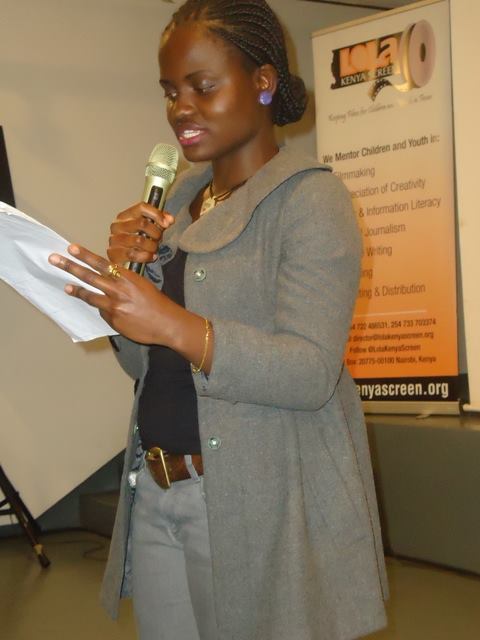 The not-for-profit organisation began its austerity measures by focusing on its core programmes—weekly school outreach, fortnightly mobile cinema, monthly film forum, quarterly internship, annual festival—while freezing staff allowances (not salaries), reducing the number of staff and then stopping staff allowances altogether. While some staff members left, this enabled LKS to remain alive for a while.
The not-for-profit organisation began its austerity measures by focusing on its core programmes—weekly school outreach, fortnightly mobile cinema, monthly film forum, quarterly internship, annual festival—while freezing staff allowances (not salaries), reducing the number of staff and then stopping staff allowances altogether. While some staff members left, this enabled LKS to remain alive for a while. CFC says its ‘core mandate’ was “to promote Cape Town and the Western Cape for local and international filming” and that this role was served “through relationships with the Department of Trade and Industry, the International Emmys, the Association of Film Commissioners International (AFCI), the South African Consulates in various territories, the Department of Home Affairs and the film industry.”
CFC says its ‘core mandate’ was “to promote Cape Town and the Western Cape for local and international filming” and that this role was served “through relationships with the Department of Trade and Industry, the International Emmys, the Association of Film Commissioners International (AFCI), the South African Consulates in various territories, the Department of Home Affairs and the film industry.” Voting for nominees of the 11th annual Groove
Voting for nominees of the 11th annual Groove Groove Award nominees were announced on April 27, 2016 and Regional Groove tours to publicise and drum up support for the event kicked off four days later. The tour brings nominated artists traversing Kenya to meet their fans, perform and seek their support for their bids to win in their nominated categories.
Groove Award nominees were announced on April 27, 2016 and Regional Groove tours to publicise and drum up support for the event kicked off four days later. The tour brings nominated artists traversing Kenya to meet their fans, perform and seek their support for their bids to win in their nominated categories.
 Groove Awards organisers say the Safaricom-sponsored and Mo Sound Events-produced scheme has seen more than 2000 artists nominated and 400 statuettes presented to musicians in Kenya and East Africa region over the past decade.
Groove Awards organisers say the Safaricom-sponsored and Mo Sound Events-produced scheme has seen more than 2000 artists nominated and 400 statuettes presented to musicians in Kenya and East Africa region over the past decade. A music streaming platform introduced in
A music streaming platform introduced in  “Through exposure to international audience, I am now able to promote my music and earn extra money from my songs,” says Christian Bella, a Congolese Bongo Flava musician in the commercial capital, Dar es Salaam.
“Through exposure to international audience, I am now able to promote my music and earn extra money from my songs,” says Christian Bella, a Congolese Bongo Flava musician in the commercial capital, Dar es Salaam. We have caught up with science teacher and gospel musician
We have caught up with science teacher and gospel musician  But you surely are a Nairobi, not Nyanza, artist; how did you come to be considered a Nyanza region musician?
But you surely are a Nairobi, not Nyanza, artist; how did you come to be considered a Nyanza region musician? Why weren’t you keen on winning again after your victory in 2010?
Why weren’t you keen on winning again after your victory in 2010? What sort of music videos are artists in Kenya making?
What sort of music videos are artists in Kenya making? Would you say mass media–radio, television, newspapers, websites, blogs–are interested in, and are supportive of, Gospel music in Kenya?
Would you say mass media–radio, television, newspapers, websites, blogs–are interested in, and are supportive of, Gospel music in Kenya? Male Artist of the Year: LJay Maasai
Male Artist of the Year: LJay Maasai Skiza ringback Tone of the Year: Mercy Masika – Mwema
Skiza ringback Tone of the Year: Mercy Masika – Mwema East & Central African Artist of the Year: Christina Shusho – Tanzania
East & Central African Artist of the Year: Christina Shusho – Tanzania We live in an age of Artificial Intelligence—digital games, self-piloting planes, self-driving cars and dancing robots—such that it is difficult to tell whether
We live in an age of Artificial Intelligence—digital games, self-piloting planes, self-driving cars and dancing robots—such that it is difficult to tell whether  Cautiously, I approach the three digital dancers. And discover, to my delight, that they are not robots but ordinary young people who dance for a living. What’s more; they are from an informal settlement.
Cautiously, I approach the three digital dancers. And discover, to my delight, that they are not robots but ordinary young people who dance for a living. What’s more; they are from an informal settlement. How and when did your group come into being?
How and when did your group come into being? Who arranges the dance moves–choreography–for Raiderz 3D Crew?
Who arranges the dance moves–choreography–for Raiderz 3D Crew? Any plans, dreams or wishes for the group?
Any plans, dreams or wishes for the group? On this bright and sunny day, a group of about 20 youth have gathered not just to sing, dance and act; they are here to showcase their performance prowess to members of the public; to announce that a new era for the arts has dawned and that they are in the arts not as a hobby but a sustainable career of choice; to create
On this bright and sunny day, a group of about 20 youth have gathered not just to sing, dance and act; they are here to showcase their performance prowess to members of the public; to announce that a new era for the arts has dawned and that they are in the arts not as a hobby but a sustainable career of choice; to create  Wanja Mwangi, who says she joined an Olympic (Kibera)-based group known as Changamka Africa as an actor in 2015 after “completing high school ,” takes the lead role in Nalia (I cry), a Geatrics theatre production.
Wanja Mwangi, who says she joined an Olympic (Kibera)-based group known as Changamka Africa as an actor in 2015 after “completing high school ,” takes the lead role in Nalia (I cry), a Geatrics theatre production. Daniel Githinji, who says he has been on stage “for just four month s,” says he is “motivated by Academy-winning Kenyan actress, Lupita Nyongo, who has proved that no matter your background, you can fulfill your dream if you believe in yourself.”
Daniel Githinji, who says he has been on stage “for just four month s,” says he is “motivated by Academy-winning Kenyan actress, Lupita Nyongo, who has proved that no matter your background, you can fulfill your dream if you believe in yourself.” “I do poetry, music and acting,” he says.”I started professional acting in 2011 when I joined travelling theatre groups in performing set books in secondary schools .I have had the privilege of working with some of the best set book performers in Kenya.”
“I do poetry, music and acting,” he says.”I started professional acting in 2011 when I joined travelling theatre groups in performing set books in secondary schools .I have had the privilege of working with some of the best set book performers in Kenya.”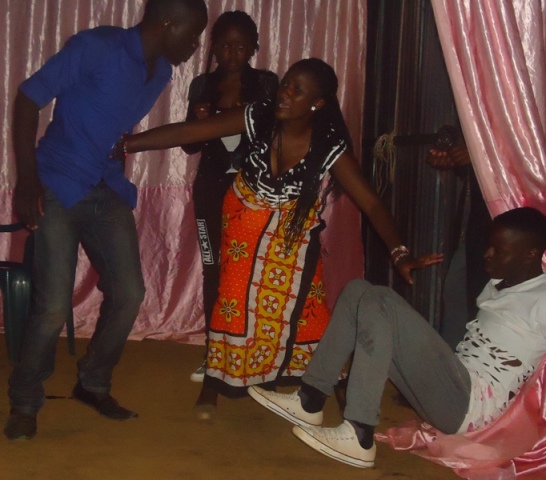 “Geatrics family is a talented hip-hop group that is here to bring about change in the arts industry,” the group says of its music team. “Gini Wasekao means ruling or taking over.”
“Geatrics family is a talented hip-hop group that is here to bring about change in the arts industry,” the group says of its music team. “Gini Wasekao means ruling or taking over.” He came on stage shortly before 9:00 PM. Plucking a 21-stringed west African traditional music instrument called the Kora, the young Afro-fusion Ugandan musician who performed Africa Express, Bulungi, Lusejera, Empale Ya Kadde and Nakato off his latest 2015 album,
He came on stage shortly before 9:00 PM. Plucking a 21-stringed west African traditional music instrument called the Kora, the young Afro-fusion Ugandan musician who performed Africa Express, Bulungi, Lusejera, Empale Ya Kadde and Nakato off his latest 2015 album, Born on August 20, 1984 in Kampala, Sebunjo has played Ugandan Ganda music since the age of six. He later went into apprenticeship under Busulwa Katambula, a renowned folk musician, poet and arts master at Makerere College School in Kampala.
Born on August 20, 1984 in Kampala, Sebunjo has played Ugandan Ganda music since the age of six. He later went into apprenticeship under Busulwa Katambula, a renowned folk musician, poet and arts master at Makerere College School in Kampala.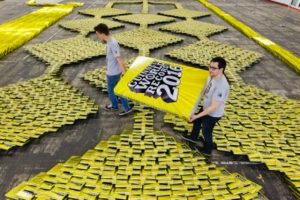 Exactly seven days ago,
Exactly seven days ago, 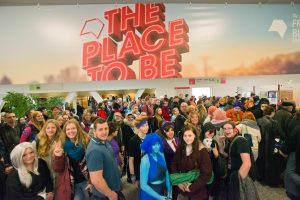 According to the Press Release sent out on July 8, THE ARTS+–a partnership between media entrepreneur Christiane zu Salmand the Frankfurt Book Fair–shall focus on the benefits of digital technologies for art and culture and discuss intellectual property issues.
According to the Press Release sent out on July 8, THE ARTS+–a partnership between media entrepreneur Christiane zu Salmand the Frankfurt Book Fair–shall focus on the benefits of digital technologies for art and culture and discuss intellectual property issues. “THE ARTS+ will have more than 2,000 sq m of exhibition space to make this subject matter tangible,” says Holger Volland, Vice President of the Frankfurt Book Fair. “Visitors to the area can experience virtual reality or 3-D art; they can visit the Museums Hub or the Creative Hub, and learn more about digital platform providers. Over the five days there will also be workshops, labs and presentations. We are especially proud of the high-profile line-up for our conference, when we’ll discuss important topics such as intellectual property, and examine the specific applications of digital technology in art. We’re looking forward to contributions by the renowned collector of media art, Julia Stoschek, and by Bas Korsten, the creative director behind ‘The Next Rembrandt’, as well as keynote speeches by bestselling author and web futurist, Jeff Jarvis, and star architect and MIT professor, Carlo Ratti. There will also be lectures by the multiple award-winning media artist Joachim Sauter, and by Robert Norton, the former CEO of Saatchi Online who now uses blockchain technology to certify artworks at his start-up in California.”
“THE ARTS+ will have more than 2,000 sq m of exhibition space to make this subject matter tangible,” says Holger Volland, Vice President of the Frankfurt Book Fair. “Visitors to the area can experience virtual reality or 3-D art; they can visit the Museums Hub or the Creative Hub, and learn more about digital platform providers. Over the five days there will also be workshops, labs and presentations. We are especially proud of the high-profile line-up for our conference, when we’ll discuss important topics such as intellectual property, and examine the specific applications of digital technology in art. We’re looking forward to contributions by the renowned collector of media art, Julia Stoschek, and by Bas Korsten, the creative director behind ‘The Next Rembrandt’, as well as keynote speeches by bestselling author and web futurist, Jeff Jarvis, and star architect and MIT professor, Carlo Ratti. There will also be lectures by the multiple award-winning media artist Joachim Sauter, and by Robert Norton, the former CEO of Saatchi Online who now uses blockchain technology to certify artworks at his start-up in California.” Some 400 musicians represented by 40 groups from Tanzania, Kenya, Uganda, Rwanda, Burundi, Mozambique, South Africa, Ghana, Guinea, Cameroun and Ethiopia are expected to participate in Zanzibar’s
Some 400 musicians represented by 40 groups from Tanzania, Kenya, Uganda, Rwanda, Burundi, Mozambique, South Africa, Ghana, Guinea, Cameroun and Ethiopia are expected to participate in Zanzibar’s 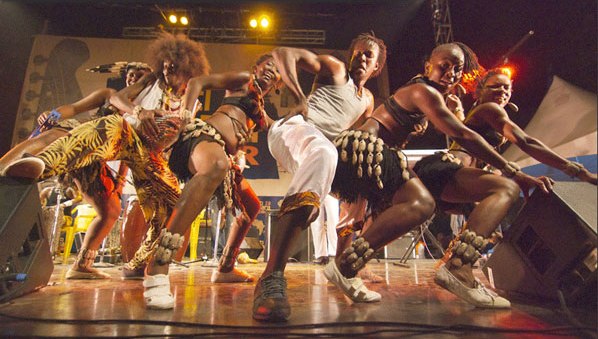 RELATED:
RELATED: Renowned Kenyan taarab singer, multi-instrumentalist, poet, composer and bandleader,
Renowned Kenyan taarab singer, multi-instrumentalist, poet, composer and bandleader,  “Zein was never formally taught by anyone,” ethnomusicologist and record producer Werner Graebner writes in his liner notes for Zein’s 1989 Globestyle recording Mtindo wa Mombasa. “He learned by seeing, listening to and asking other oud players questions. He often went to the home of the tailor, Omar Awadh Ban, a well-known oud player of the time (who recorded for the Jambo label in the late 40s), and stayed whole nights playing and discussing music.”
“Zein was never formally taught by anyone,” ethnomusicologist and record producer Werner Graebner writes in his liner notes for Zein’s 1989 Globestyle recording Mtindo wa Mombasa. “He learned by seeing, listening to and asking other oud players questions. He often went to the home of the tailor, Omar Awadh Ban, a well-known oud player of the time (who recorded for the Jambo label in the late 40s), and stayed whole nights playing and discussing music.” Zein’s turn toward cultural authenticity – if that is how he truly saw it at the time – involved a recreation of “utungaji wa zamani,” the old style of composition. This meant the style employed by Siti binti Saad and her contemporaries. While binti Saad’s music was stylistically eclectic, it bore a strong Egyptian influence.
Zein’s turn toward cultural authenticity – if that is how he truly saw it at the time – involved a recreation of “utungaji wa zamani,” the old style of composition. This meant the style employed by Siti binti Saad and her contemporaries. While binti Saad’s music was stylistically eclectic, it bore a strong Egyptian influence. Most of Zein’s commercial recordings – dozens of “volumes” on cassette – are only available in Mombasa, from Mbwana Radio Services or until his death, from Zein himself. But a good sampling of Zein’s most popular songs have been released internationally on two full-length albums, Mtindo wa Mombasa (1989, Globestyle) and The Swahili Songbook (2000, Dizim Records) and a smattering of compilations (including John Storm Robert’s classic Songs the Swahili Sing, first released in 1980).
Most of Zein’s commercial recordings – dozens of “volumes” on cassette – are only available in Mombasa, from Mbwana Radio Services or until his death, from Zein himself. But a good sampling of Zein’s most popular songs have been released internationally on two full-length albums, Mtindo wa Mombasa (1989, Globestyle) and The Swahili Songbook (2000, Dizim Records) and a smattering of compilations (including John Storm Robert’s classic Songs the Swahili Sing, first released in 1980). This week’s
This week’s  This exhibition of photographs that runs through September Commemorates 10 years of AGRA’s “journey of working to catalyse transformation across the agricultural value chain in Africa.”
This exhibition of photographs that runs through September Commemorates 10 years of AGRA’s “journey of working to catalyse transformation across the agricultural value chain in Africa.” On the panel shall be Mike Strano (Founder, Phat! Entertainment), Tim Rimbui (Producer & Founder Waabeh.com), June Gachui ( Artist and IP Lawyer) and George Gachara (Managing Partner, HEVA Fund).
On the panel shall be Mike Strano (Founder, Phat! Entertainment), Tim Rimbui (Producer & Founder Waabeh.com), June Gachui ( Artist and IP Lawyer) and George Gachara (Managing Partner, HEVA Fund). “Bomware village is located off Migori-Nyachenge Road on you way from Kisii town to Isebania on the Kenya/Tanzanian border. An all-weather road diversion on the left before Rongo town leads to Tabaka, the home of Kisii soap stone in in Kisii, one of the 47 administrative units known as counties in Kenya. The town is littered with Soapstone curio shops. A road that leads to the quarry passes through Tabaka, where my studio, MberArt is situated.”
“Bomware village is located off Migori-Nyachenge Road on you way from Kisii town to Isebania on the Kenya/Tanzanian border. An all-weather road diversion on the left before Rongo town leads to Tabaka, the home of Kisii soap stone in in Kisii, one of the 47 administrative units known as counties in Kenya. The town is littered with Soapstone curio shops. A road that leads to the quarry passes through Tabaka, where my studio, MberArt is situated.” A group of
A group of  The band that comprises lead guitarist Maximiliano Filardi (Max), lead singer Samuel Warui (Sam), drummer Samuel Gakungu (Gakosh), bassist Maina Makundu and rhythm guitarist Abed Kariuki, has performed in several festivals in Kenya and Uganda, including OktoberFest, Rift Valley Festival, Sondeka Fesitval and Nyege Nyege Festival in Jinja.
The band that comprises lead guitarist Maximiliano Filardi (Max), lead singer Samuel Warui (Sam), drummer Samuel Gakungu (Gakosh), bassist Maina Makundu and rhythm guitarist Abed Kariuki, has performed in several festivals in Kenya and Uganda, including OktoberFest, Rift Valley Festival, Sondeka Fesitval and Nyege Nyege Festival in Jinja. ForwardKeys, a company that predicts future travel patterns not only refers to East Africa’s air travel growth as ‘exceptional performance’, but that it has surpassed the continental growth rate of 5.6%, with North African countries like Algeria, Egypt, Morocco and Tunisia seeing little growth or even a decline.
ForwardKeys, a company that predicts future travel patterns not only refers to East Africa’s air travel growth as ‘exceptional performance’, but that it has surpassed the continental growth rate of 5.6%, with North African countries like Algeria, Egypt, Morocco and Tunisia seeing little growth or even a decline. As the
As the  Welcome to Kirya Live 2016 Show at Kampala Serena Hotel’s Victoria Hall where Uganda’s award-winning Afro-soul guitarist and crooner, Maurice Kirya, is serenading his fans with his Mwooyo (Luganda word for Soul), a blend of Afro-soul, hip-hop, gospel, R&B and traditional Ugandan rhythms.
Welcome to Kirya Live 2016 Show at Kampala Serena Hotel’s Victoria Hall where Uganda’s award-winning Afro-soul guitarist and crooner, Maurice Kirya, is serenading his fans with his Mwooyo (Luganda word for Soul), a blend of Afro-soul, hip-hop, gospel, R&B and traditional Ugandan rhythms. Show before Kirya returns with Die For You and Mulembe Gwa Kirya.
Show before Kirya returns with Die For You and Mulembe Gwa Kirya. Opining that the Ugandan live band music scene is on a steady growth path, he says,“It’s not like the time when I started out; it was harder then because so many people weren’t accustomed to it.”
Opining that the Ugandan live band music scene is on a steady growth path, he says,“It’s not like the time when I started out; it was harder then because so many people weren’t accustomed to it.” Kirya became the first East African to win the prestigious 2010 Radio France International (RFI) Discoveries Music Award after entering his 2009 debut soulful album, Misubbaawa. He also won a career development grant and embarked on a year-long African tour.
Kirya became the first East African to win the prestigious 2010 Radio France International (RFI) Discoveries Music Award after entering his 2009 debut soulful album, Misubbaawa. He also won a career development grant and embarked on a year-long African tour. An
An  “I’m reinventing myself,” says the multiple South African Music Awards (SAMA) winner who believes pan-African collaboration is long overdue. “I’m traveling the continent on a search to find something new, to make something meaningful, a game-changer. We’re doing what we should have done a long time ago, owning who we are as Africans and coming together and breaking these boundaries for good, for the better. It’s been an amazing journey. I’ve grown by connecting with other trailblazers. Each has their own unique style but a shared passion to put a spotlight on Africa.“
“I’m reinventing myself,” says the multiple South African Music Awards (SAMA) winner who believes pan-African collaboration is long overdue. “I’m traveling the continent on a search to find something new, to make something meaningful, a game-changer. We’re doing what we should have done a long time ago, owning who we are as Africans and coming together and breaking these boundaries for good, for the better. It’s been an amazing journey. I’ve grown by connecting with other trailblazers. Each has their own unique style but a shared passion to put a spotlight on Africa.“ Sunu Gonera embraces the spirit of collaboration driving the project, bringing in the Afrofuturism of Kenyan digital artist and photographer Osborne Macharia and the vibrant colours of Ghanaian street artist Moh Awudu as examples of how Africa is redefining its image.
Sunu Gonera embraces the spirit of collaboration driving the project, bringing in the Afrofuturism of Kenyan digital artist and photographer Osborne Macharia and the vibrant colours of Ghanaian street artist Moh Awudu as examples of how Africa is redefining its image. “It’s been a dream job, which felt like it was written specifically for me,” says Gonera. “Khuli, Native VML and Absolut all share my vision to show the world a different side of Africa, so it’s been a true collaboration and an amazing experience. This is my love letter to Africa. For the first time since I started in this business, I finally feel like I’ve found my voice.”
“It’s been a dream job, which felt like it was written specifically for me,” says Gonera. “Khuli, Native VML and Absolut all share my vision to show the world a different side of Africa, so it’s been a true collaboration and an amazing experience. This is my love letter to Africa. For the first time since I started in this business, I finally feel like I’ve found my voice.” Mafikizolo, a multi-award-winning duo from South Africa have put up a sizzling performance to the delight of their fans in the Ugandan capital, Kampala. So satisfied were the fans–it appeared–that they did not call for any encore as they usually do for outstanding live gigs in Uganda.
Mafikizolo, a multi-award-winning duo from South Africa have put up a sizzling performance to the delight of their fans in the Ugandan capital, Kampala. So satisfied were the fans–it appeared–that they did not call for any encore as they usually do for outstanding live gigs in Uganda. Then Nciza, the female member of the kwaito group, chipped in by asking: “Can we adopt Uganda as our home?” “Yes,” the excited fans responded.
Then Nciza, the female member of the kwaito group, chipped in by asking: “Can we adopt Uganda as our home?” “Yes,” the excited fans responded. Mafikizolo won two prestigious awards for the album Sibongile in the South African Music Awards (SAMA) in April 2003 by taking the Best Duo or Group and Best Afro Pop Album categories. They also took the Best Album, Best African Pop, and Best Group awards at the Metro FM Music Awards in November 2003.
Mafikizolo won two prestigious awards for the album Sibongile in the South African Music Awards (SAMA) in April 2003 by taking the Best Duo or Group and Best Afro Pop Album categories. They also took the Best Album, Best African Pop, and Best Group awards at the Metro FM Music Awards in November 2003. With Joe Kahirimbanyi on vocals and guitar and Maureen ‘MoRoots’ Rutabingwa on vocals and sax, Qwela Band opened their gig with an instrumental, Sita Tafa.
With Joe Kahirimbanyi on vocals and guitar and Maureen ‘MoRoots’ Rutabingwa on vocals and sax, Qwela Band opened their gig with an instrumental, Sita Tafa. Nairobi-based DJ and music producer, Saint Evo, provided an exciting experience with his afro fusion electric club music.
Nairobi-based DJ and music producer, Saint Evo, provided an exciting experience with his afro fusion electric club music. “The 14th edition of Blankets and Wine was remarkably different from the others. This edition was at a new venue Lugogo Cricket Oval. Having Mafikizolo the finest acts on the continent has shown how we have grown. Our consumers got a new experience and indeed enjoyed, Ugandan musicians like Giovanni Kiyingi, Qwela Band and Levixone who performed alongside them created that much loved afro-based music fusion,” Alex Tusingwire, Brand Manager of Tusker Malt Lager.
“The 14th edition of Blankets and Wine was remarkably different from the others. This edition was at a new venue Lugogo Cricket Oval. Having Mafikizolo the finest acts on the continent has shown how we have grown. Our consumers got a new experience and indeed enjoyed, Ugandan musicians like Giovanni Kiyingi, Qwela Band and Levixone who performed alongside them created that much loved afro-based music fusion,” Alex Tusingwire, Brand Manager of Tusker Malt Lager. Kenya’s film classification board has hurriedly convened a meeting to cool down rising tempers of artists, legal experts and rights activists over a contentious
Kenya’s film classification board has hurriedly convened a meeting to cool down rising tempers of artists, legal experts and rights activists over a contentious 
 No sooner had Mutua publicly stated that KFCB had agreed to withdraw the draft bill than the meeting ended.
No sooner had Mutua publicly stated that KFCB had agreed to withdraw the draft bill than the meeting ended. While musician Valentine Kamau (Valentine Ziki), in a post on Facebook cautions: “Ezekiel Mutua is seeking to make censorship of stage plays, events, literature, the internet one of KFCB’s mandate,” Cajetan Boy of Et Cetera Productions, also in a Facebook post, calls upon players in the movie sector to “Get into a guild. Make sure the house is in order. Get registered. The next move is to lock out individuals not in guilds and non registered guilds. And KFCB is planning follow up meeting soon with ‘legitimate’ stakeholders.
While musician Valentine Kamau (Valentine Ziki), in a post on Facebook cautions: “Ezekiel Mutua is seeking to make censorship of stage plays, events, literature, the internet one of KFCB’s mandate,” Cajetan Boy of Et Cetera Productions, also in a Facebook post, calls upon players in the movie sector to “Get into a guild. Make sure the house is in order. Get registered. The next move is to lock out individuals not in guilds and non registered guilds. And KFCB is planning follow up meeting soon with ‘legitimate’ stakeholders. The names of authors, illustrators, oral storytellers and reading promoters nominated for the
The names of authors, illustrators, oral storytellers and reading promoters nominated for the  AITEC Africa, who organise BFMA, say the theme of the event is ‘The Digital Edge: Explore, Encounter, Exchange.’
AITEC Africa, who organise BFMA, say the theme of the event is ‘The Digital Edge: Explore, Encounter, Exchange.’ RELATED:
RELATED: